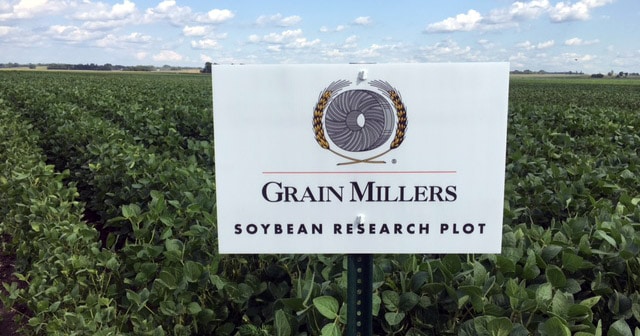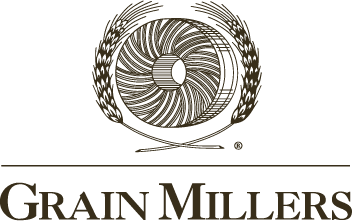Non-GMO Food-Grade Soybean Research Plot Open to Growers, Breeders, and Customers
July 19, 2019
Non-GMO and Organic food-grade soybean production is very small in comparison to regular GMO soybean production, even with the rising awareness and consumer demand for Non-GMO products. Therefore, the great majority of soybean research is focused on GMO varieties and breeding techniques rather than Non-GMO soybean varieties and breeding techniques.
In recent years there has been a renewed interest by some major and regional seed companies in research and breeding efforts to develop Non-GMO soybean varieties for food and feed use, however, it still pales in comparison to GMO breeding and research efforts. Because of this, Non-GMO food-grade soybean research plots, no matter what their size, are not very numerous.
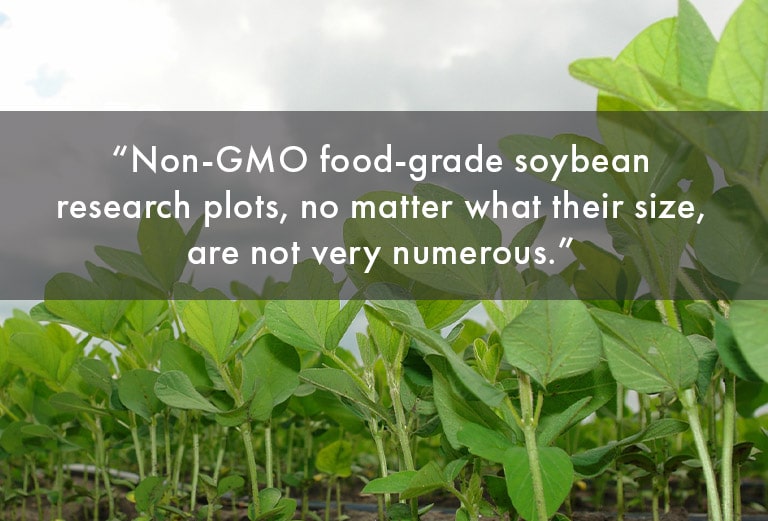
In-House Soybean Research
Grain Millers has always felt it is important to conduct our own in-house research so that we can compare and evaluate different Non-GMO food-grade soybeans. Initially, we produced plots of available desired non-GMO soybean varieties for introduction to both farmers and customers. Little effort was put into the development of new varieties.
However, in 2011 we began a comprehensive Non-GMO food-grade soybean research plot led by our Identity Preserved Crop Specialist, Craig Tomera, CCA, SSp and Roger Mortenson, Vice President of the Grain Millers Specialty Products Division.
Staying Ahead of the Curve
The 2018 research plot contained 32 varieties – some varieties have been around for 8-10 years, some for 3-5 years, and some varieties are still experimental and not available for purchase. The 2019 plot has a similar amount of Non-GMO food-grade soybean varieties, but over half of them will be experimental or first-year releases, which will help keep Grain Millers ahead of the curve when it comes to knowledge of current and new Non-GMO food-grade soybean varieties.
Soybean Variety Research for Successful Harvest & Food Products
The data from our Non-GMO food-grade soybean production acres, in addition to relevant data from our Non-GMO food-grade soybean variety research, gives us good information that we can use to help contract varieties with our grower base to give farmers the best chances for a successful harvest. We also use this information to keep our customers updated on Non-GMO food-grade soybean varieties that will work best for their product line needs and are available for purchase from Grain Millers.
Non-GMO soybean seed varieties are used by growers in conventional non-GMO production and can be used by organic growers in organic production if their contract calls for a specific non-GMO variety to be used, or if they cannot find a suitable organically grown soybean seed variety.
Soybean Seed Breeders Work with Grain Millers
Soybean seed breeders work with Grain Millers to field-test their experimental varieties to learn the following:
- Strength or lack of seedling emergence
- Vigor/rate of growth
- Disease tolerance or resistance
- Insect tolerance or resistance
- Effect of the environment of where they are grown
- Crop Yield
- Protein, Oil, and Sugar content, plus other intrinsic qualities required by soybean food manufacturers.
Soybean seed breeders plant many plots like this on their own, but they are usually small plots – 4 rows x 20 feet long. While this gives them a lot of information, planting in a larger plot as we do at Grain Millers can give everyone, including soybean seed breeders, a better look at how a soybean variety will grow and adapt in a field plot situation that mimics full-scale production. Our plot is normally 6 rows wide by at least ¼ mile long. Having an independent plot like this helps us to collect more data and get a look at potential new soybean varieties a couple of years before others do.
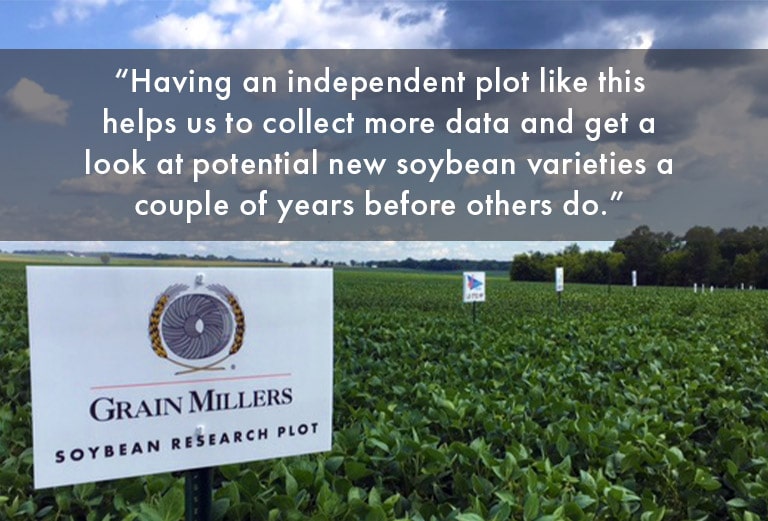
Large-Scale Soybean Research Plot Provides More Data
This larger-scale plot helps us to gather the following information:
- Strength of emergence
- Plant type/structure – is it a “thin line plant,” a “medium bushy plant,” or a ‘bushy” plant type/structure.
- Does the plant type/structure pose any potential problems for the variety?
- Does the plant type/structure require it to be planted in a specific row width, planted at a certain plant population, or grown in a specific environment/soil type?
- How high up on the plant do the flowers and pods begin to develop – 3, 4, 5 inches up from the soil line?
- Disease resistance or issues
- Insect resistance or issues
- Lodging or standability issues – do the plants stay upright or do they have the tendency to lodge/fall over late in the year?
- Seed size and seed coat integrity – are they uniform size and do the seed coats have the tendency to crack or do they remain whole throughout the harvesting and cleaning process?
- YIELD for the farmer!!!
- Intrinsic values such as protein, oil, and total sugar content.
- General appearance and seed coat appearance for food-grade usage.
Why Is This Data Important?
This data is important to help Grain Millers decide if we want to promote a specific soybean variety to our customers or growers for production.
- From the harvested production of Non-GMO food-grade soybeans and from our Non-GMO food-grade soybean research plot, we send samples to our customers for their evaluation of the intrinsic qualities of the soybean for cooking/processing quality, and for final product approval.
- Customers not only look at intrinsic properties such as protein, oil, and sugar content of the soybean sample, they also do test runs of actual food production to evaluate the performance of the variety for use in their final product
- Customers also look at seed size and uniformity of the soybean variety. Seed uniformity improves the stability of the final product, the process flow, and can help determine processing time.
- Seed coat issues such as cracks, chips, or tears in the seed coat will affect absorption rates and final product yield, resulting in a poor-quality finished product.
- Final product evaluation – texture, form, smoothness, taste – all can vary from variety to variety.
- General appearance of the soybean – size, uniform shape, and cleanliness of the soybean seed are aesthetic properties that are extremely important to our food soybean customers.
Research Helps Develop Relationships
Doing this type of research plot helps us develop closer relationships with the soybean seed companies and soybean breeders that are developing new Non-GMO Food Grade soybean varieties. We can give them our observations on what is working and what is not, plus let them know what our customers are looking for in a food-grade soybean variety. Also, growers want as much hard data as they can get to make buying and contracting decisions.
Grain Millers becomes another unbiased source for the information they need to make their decisions – mainly based on agronomic data. By having a research plot like ours, it shows growers that we are committed to growing only varieties that yield and perform well in the field for them and that we are not just giving them average genetics to grow. It also helps develop a sense of trust and professionalism with our growers AND customers, by showing them we are knowledgeable in what we are asking them to grow and knowledgeable in what we are selling to them.
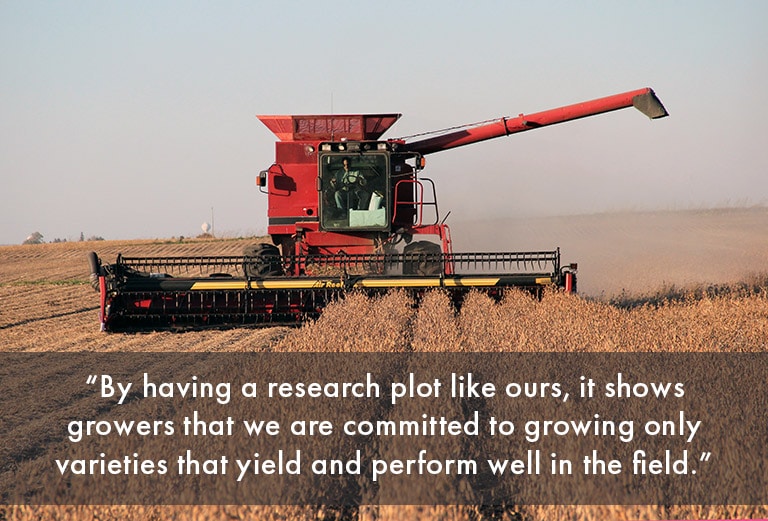
If you are interested in growing or purchasing food-grade soybeans, you can contact Craig Tomera at 952.983.1289 or by email, or Roger Mortenson at 952.983.1331 or by email.
